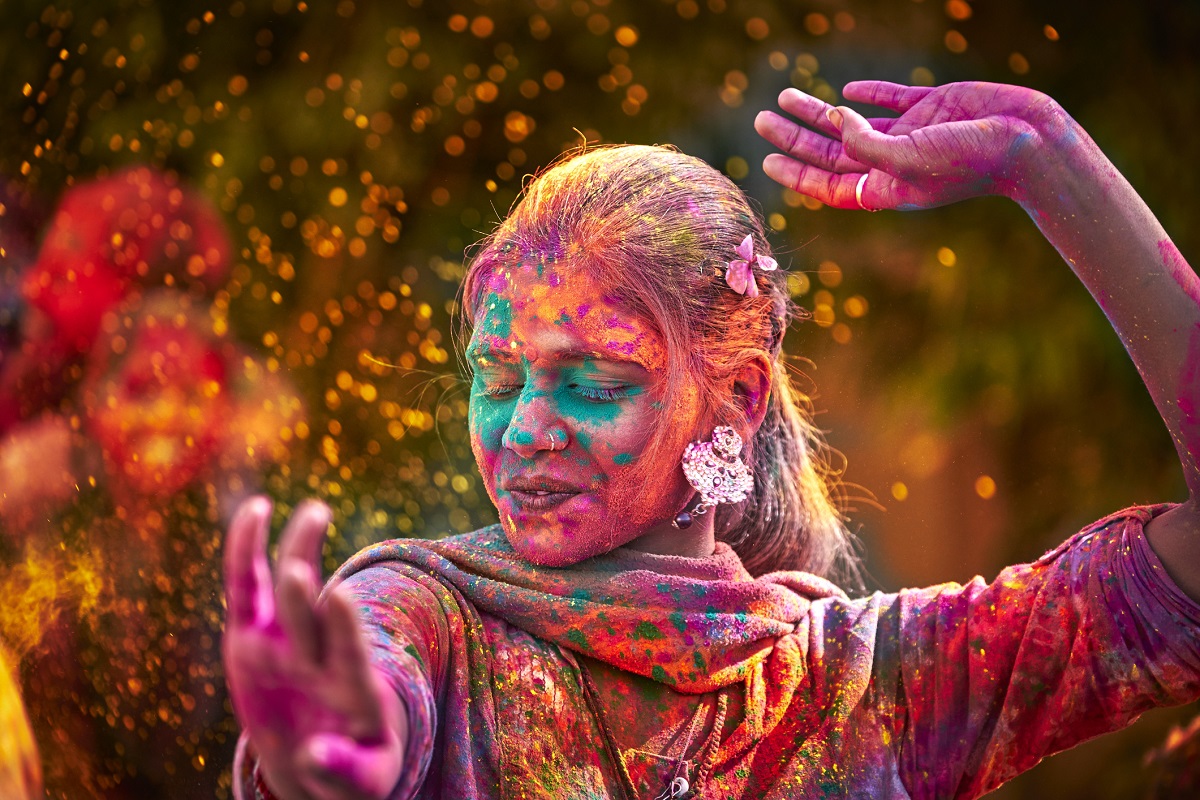Amidst the joyous celebrations of Holi, it’s crucial to prioritize health and safety, ensuring that the festivities bring merriment without compromising well-being. It’s time to embrace the spirit of festival responsibly, especially for expectant mothers. From safeguarding against harmful colours to prioritizing hydration and rest, adopting simple yet essential precautions can make all the difference in ensuring a Holi celebration that is both joyful and health-conscious.
Cosmetologist and Co-Founder at Abhivrit Aesthetics Dr. Jatin Mittal in New Delhi said, “These days, industry chemicals used extensively in colour formulation such as motor oil, diesel, acids, mica, glass powder, and alkalis not only severely harm skin but also cause severe ailments like eczema, blisters, severe redness, and skin peeling. It’s best to take care to reduce the possible effects on the skin and hair of these.”
Advertisement
“People who play Holi or handle colours frequently report severe skin reactions, asthma, conjunctivitis, and sight impairment,” said Dr. Manish Sharma, Sr. Medical Oncologist from Positron Superspeciality and Cancer Hospital in Rohtak and Medical Oncologist at Cancer Care clinic in Faridabad. “A lot of people request darker colours that stay on the skin longer, but the industrial chemicals in these colours can cause serious diseases like skin cancer. In addition, toxic colours combined with UV rays from the sun can cause phototoxic reactions to the skin, which further leads to blisters causing redness to the skin. Moreover, rhodamine B is also used for pink, red, and purple.”
In addition to colours, one such custom connected to Holi is bhang. The two elements that bring the festival full circle are rang and bhang. However, a bhang overdose might result in major health issues.
“Bhang is an intoxicant that gives you a sleepy, groggy feeling. Bhang consumption can impact the foetus, neurological system, and brain in addition to raising blood pressure and heart rate,” said Dr. Shobha Gupta, Medical Director, Gynecologist and IVF Specialist from Mother’s Lap IVF Centre, New Delhi and Vrindavan. “Pregnant women must avoid playing Holi at all, instead, they should stay indoors or, if they must go outside, do so in the company of reliable elders. Additionally, modern Holi colours are composed of chemicals. Certain hues can potentially cause cancer. Thus, nursing moms should use the same prudence as expectant mothers. When a pregnant woman uses these colours in an area where lead is present, it may cause an abortion or miscarriage as well as an underweight or premature birth. The reproductive and nervous systems may also be impacted. Have a glass of lemon detox water first thing in the morning, then eat something clean and healthful.”
Tips for your hair and skin protection by Dr Jatin Mittal:
Apply a generous dose of SPF before heading outside. On the day of Holi, make sure to only use products with high levels of SPF and Vitamin E. They’ll erect a shield to block UV radiation.
Before you begin playing, make sure your hair is well-oiled. Olive and coconut oils are good choices for shielding your hair from strong colouring.
Use oil on nails, ear lobes, and behind your ears as well, as these are areas where the colour tends to settle more easily.
After playing Holi, especially if one uses chemical colours, stay out of the scorching sun while the colours are still on your body or face. As a result, the colours are more vibrant and challenging to remove. If you are outside, choose a shaded spot to sit.
Make greater use of colours that are easily removed, such as red and pink. Vibrant colours like orange, yellow, green, and purple contain more dangerous compounds and therefore should be avoided.
Remember to apply waterproof sunscreen with at least SPF 30 or higher before spending a day in the sun.
Dress mostly in coverings for your body. Avoid bulky, difficult-to-dry materials like denim.
Use a bandana or thick scarf to cover your head.
Avoid wearing lenses when playing outside. Although the colours of Holi are irritating, lenses tend to absorb the colour, making the situation worse. Put on spectacles and make sure you clean them occasionally.
How to remove colour afterwards:
After washing hair, it needs to be deeply conditioned to remove colour. Ensure that your hair is tidy. After two to three days, use a hair mask to repair the damage.
It’s crucial to wash your face and hair after experimenting with colour. Use a cleanser rather than roughly rubbing the skin with soaps to wipe the face of ‘Gulal’. Apply a tonne of moisturiser after this, paying special attention to products designed for sensitive skin.
Refrain from using your fingernails to remove colour since they will leave ugly stains. To remove the colours, gently scrub the face and body with granulated sugar.
The week after, refrain from bleaching, shaving, waxing, and getting a facial or clean-up. Allow your body and skin some time to heal from the injury.
To remove stains, stay away from using kerosene, petrol and spirits as they will cause your skin to become dry.
Use a solution of sea salt, glycerine, and a few drops of fragrance oil to rejuvenate your skin. This mixture has antibacterial and antifungal properties and can also remove artificial colouring











